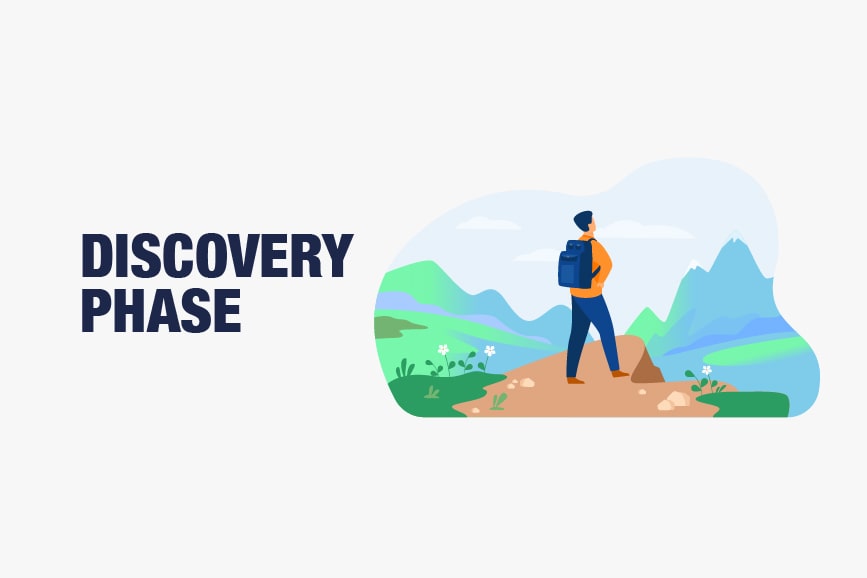The Importance Of The Discovery Phase In App Development
The discovery phase of app development is a critical component for the successful launch and maintenance of any mobile application. Without it, developers risk creating an unprofitable product or missing out on key features that could make the user experience more enjoyable. This article will explore why this discovery phase is so important? And how it can help create an efficient and effective end-product.
Table of Contents
What Is The Discovery Phase?
One of the most important steps in mobile app development is the discovery phase. This helps to define the goals, scope, and requirements of the project.
It is during this phase that crucial decisions take place and can impact the success of the final product. Find out why starting your project with the discovery phase is crucial by reading this article by experienced developers from Agilie. That will provide valuable insights and guidance.
The discovery phase requires comprehensive research into the target audience’s demands and habits; this includes collecting data from various sources such as surveys, market analysis, interviews with stakeholders, competitor reports, customer feedback etc.
It also entails creating documentation such as use cases and personas. This helps define project goals and identify potential risks before proceeding further in the development process.
Additionally, it facilitates team collaboration by allowing them to evaluate features together while gaining a better understanding of the product’s functionality.
Consequently, these efforts lead to more accurate design decisions and faster turnaround times on projects due to fewer errors or delays during implementation.
Why Is The Discovery Phase Important?
The discovery phase of app development is like looking for buried treasure, as it unearths vital information that can help create a successful product. It provides the foundation for all future decisions and builds credibility with stakeholders by focusing on their needs and priorities. This makes the discovery phase an essential part of any app creation process.
When exploring the importance of this stage, one must consider how it helps identify potential risks associated with developing the application. Such as compatibility issues, user experience problems or even financial limitations.
By gaining an understanding of these possible obstacles before investing resources in building an application, developers are able to craft solutions around them in advance.
Additionally, discovering customer needs early allows teams to design products tailored to meet those requirements. This can result in higher satisfaction ratings among users.
Clearly, there is immense value in taking time during the beginning stages of development to carefully analyze what lies ahead.
By recognizing the significance of the exploration process, organizations position themselves to deliver applications that provide real-world benefits while avoiding common pitfalls along the way.
What Information Should Be Gathered During The Discovery Pocess?
Some may argue that the discovery phase of mobile app development is not worth the effort. But it can be an essential tool for success. This stage involves assessing and understanding a project’s requirements to ensure its successful completion. Gathering information during this process is paramount.
An effective discovery process should review existing data and resources related to user experience, technology, performance, budget and timeline constraints.
It should also involve dialogue with key stakeholders about their desired outcomes for the application. As well as research into competitive markets and customers’ needs.
Based on all this information from conversations and documents, teams can create roadmaps outlining each step to produce a high-quality product meeting customer expectations.
By taking these proactive measures during the discovery phase, organizations can set themselves up for smoother production processes down the line while creating quality applications users will love.
What Steps Should Be Taken After The Discovery Phase?
After the discovery phase, it is essential to take further steps to ensure that the application will be successful and meet customer needs.
To begin with, an analysis should be conducted on the data collected during the discovery process in order to develop a detailed plan for how best to move forward.
This includes identifying any potential risks or challenges associated with launching the application, as well as setting out achievable goals and objectives. It also involves reviewing existing processes and procedures within the organization, if applicable, so that they can be adapted accordingly.
Furthermore, defining strategies for marketing and user acquisition are important considerations here too.
Following this stage, stakeholders must work together to create wireframes and mockups which provide visual representations of what the final product might look like. These assets serve as blueprints for developers. They then use them to build fully functional prototypes for user-testing before releasing.
Additionally, quality assurance testing should be carried out throughout each iteration of product development. It is for ensuring that any bugs or glitches are identified and remedied before launch day arrives.
Finally, once everything is ready to go live, proper documentation should be created. And it should be detailing how people can access and utilize the app when it’s available in marketplaces such as Apple’s App Store or Google Play Store.
With these measures taken care of, a high-quality application will soon become available for customers around the world!

Conclusion on Discovery Phase in App Development
The importance of the discovery phase in app development is undeniable. It serves as the foundation for any successful project and provides a comprehensive understanding of the customer’s needs.
Through this process, developers can gather valuable information. This will allow them to create a product tailored specifically to their target audience.
This stage also gives companies an opportunity to assess potential risks before they begin investing resources in the project.
By taking these steps, businesses are better able to anticipate possible issues and adjust accordingly.
Furthermore, it is essential that all stakeholders in the development process are on the same page during this period. So that everyone has a clear vision of what success looks like throughout each milestone.
Once adequate research is in place, designers should be able to craft wireframes or prototypes. They accurately reflect user requirements and expectations.
Finally, communication between all parties is paramount when assessing customer feedback at every stage of production. From concepting through launch and beyond.
In conclusion, recognizing the value of the discovery phase in app development enables companies to maximize their efforts. And it is protecting themselves against potential pitfalls down the line.
Gathering pertinent data allows developers to design solutions based on real-world usage scenarios rather than guesswork. It is also ensuring customers receive exactly what they need.

Victor Z Young is a Civil Engineer with 35 years of experience working alongside the executive team of various construction companies. Victor specializes in construction insurance, delay analysis, performance analysis and engineering. He holds a Doctor of Project Management from Northwestern University.










